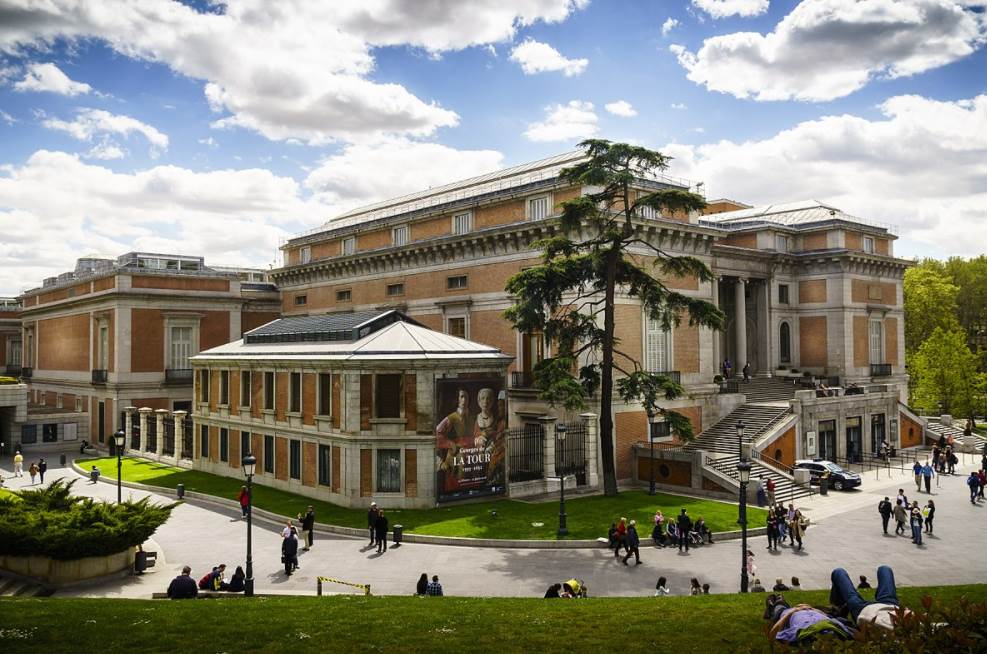Very few artists in history have dedicated their careers to a monarch such as Diego Velázquez (1599-1660) to King Philip IV of Spain.
Apart from a couple of occasional trips to Italy and an early period in his native Seville, the famous Spanish artist spent most of his days at the Spanish court in Madrid.
That’s also why most of the oeuvre of the master of the Baroque era mostly consists of portraits of the Spanish royal family.
In this article, we’ll take a closer look at some of the most interesting facts about The Coronation of the Virgin by Diego Velázquez, one of the few paintings he produced with a religious subject.
1. The painting was probably completed around 1636
Some art historians suggest that The Coronation of the Virgin was completed in the early 1640s, but there isn’t a definitive agreement on this date.
It’s more likely that it was painted around the same time as “The Surrender of Breda, ” a monumental work of art that was completed in 1635.
If indeed the painting was completed between 1635 and 1636, it was nearly 5 years after the artist had returned from his first trip to Italy.
He completed multiple portraits of the Royal family, including the fascinating “Equestrian portrait of Prince Balthasar Charles” (1635).
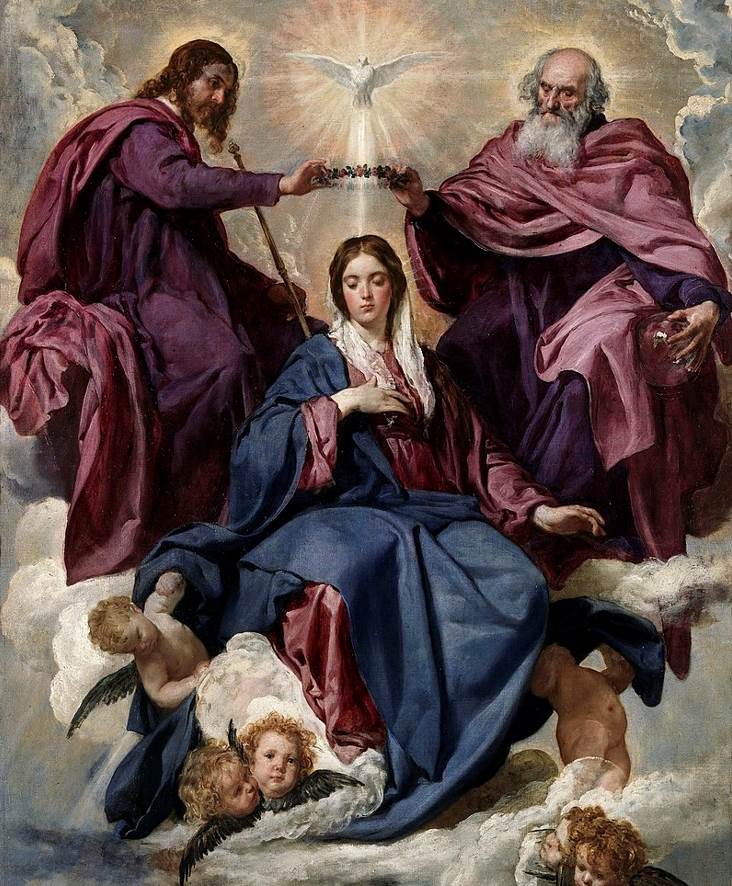
2. It was probably commissioned by the French wife of King Philip IV
The painting was hung at the praying chapel of the Queen of Spain, Elisabeth of France (1602–1644), a woman also sometimes referred to as “Isabella of Bourbon.”
She had her chapel at the Real Alcázar of Madrid which was located on the second floor of this immense building. This area of the building was referred to as the “Galería del Cierzo.”
It eventually burned down along with numerous priceless works of art on Christmas Eve of 1734. It was replaced with the current Royal Palace of Madrid shortly after.
The chapel was overloaded with paintings as an incredible 54 paintings, many related to the Virgin Mary, once hung on its walls.
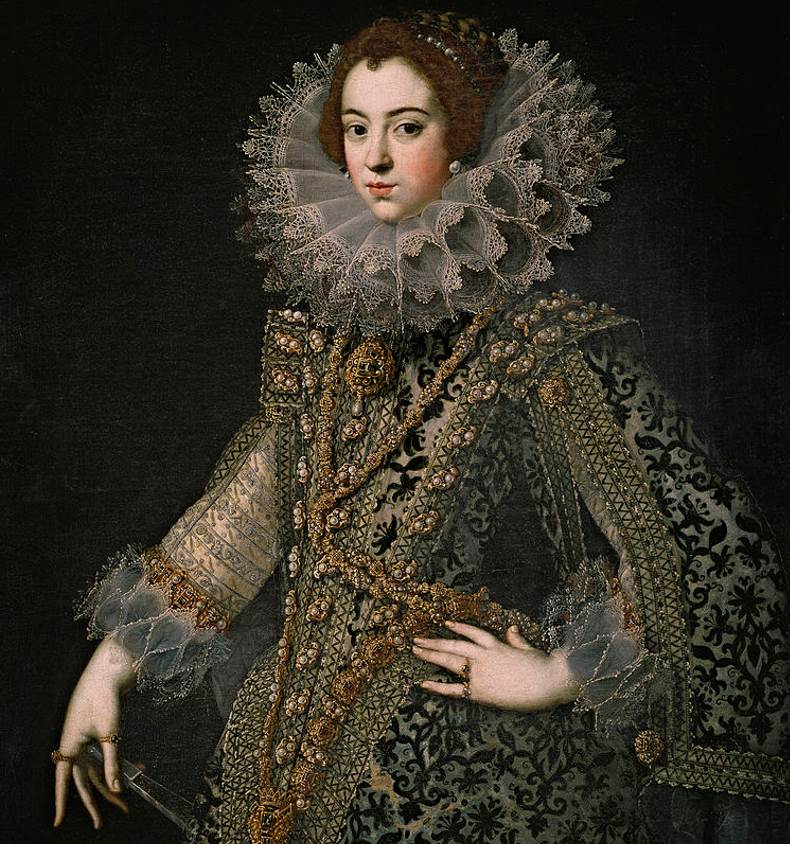
3. The painting depicts a popular subject in Marian art
The chapel was already heavily decorated with Marian art before Diego Velázquez picked up his brushes to start working on this amazing painting.
The most famous works inside the chapel were those of Italian artists Andrea Vaccaro and Alessandro Turchi. The latter painted a series of 9 works called “The Feasts of Our Lady” which were brought to Madrid from Rome shortly before.
It depicts the Holy Trinity crowning the Virgin Mary. Jesus Christ is on the left and the old man to the right represents God the Father. The Holy Spirit is as usual represented by a white dove.

4. The model is possibly the same woman as in a controversial painting
One of the most remarkable facts about The Coronation of the Virgin by Diego Velázquez is that the model for Mary is most probably the same woman as the model in one of his most controversial paintings.
Nudity was frowned upon in art in the deeply religious Catholic Spain of the 17th century (and beyond). At least, for Spanish artists. The private quarters of King Philip IV hung full of nudes painted by artists such as Titian and Rubens.
Velázquez is credited with being the first Spanish artist to paint a nude female, and it’s his only surviving nude as well. Because of his status as a court painter, he was the only artist to get away with it.
This painting is called the “Rokeby Venus” (1647-1651) and most probably depicts the same woman that was the model of this work.

5. It’s a remarkable painting in the artist’s oeuvre for a particular reason
Velázquez managed to integrate an incredible sense of realism into his paintings. This is especially true for his earlier works in Seville such as “Old Woman Frying Eggs” and “The Waterseller of Seville.”
He continued the same style in his later works and even in the few religious paintings he produced. This is one of the aspects that differentiates him from other Baroque artists of the same period.
The most remarkable fact about this painting, however, is that it was the final religious painting he ever produced. This is quite remarkable because his career spanned well over 2 more decades.
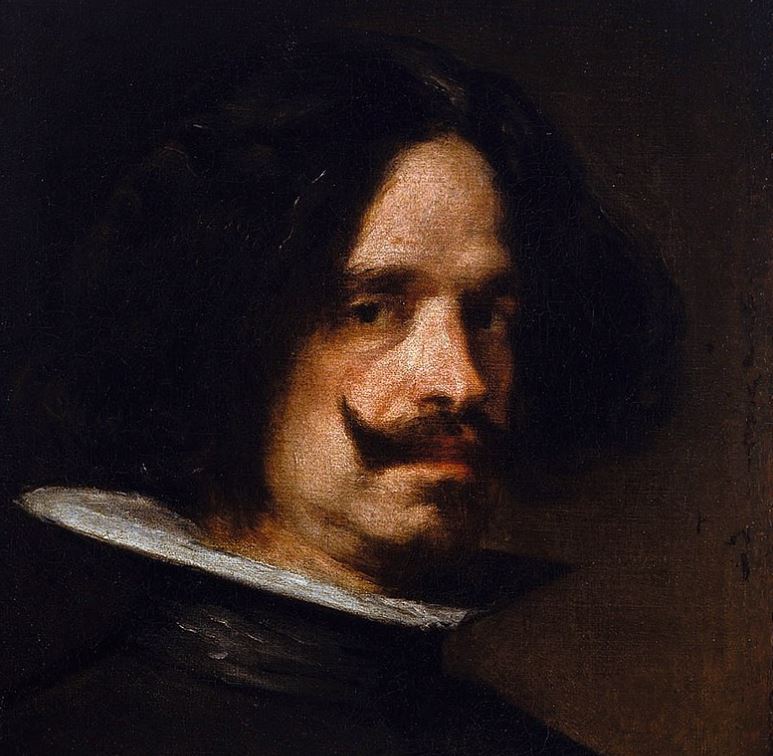
6. The artist used a common Venetian type of color
The overall composition takes the shape of an inverted triangle and the predominant colors are blue and red. This red wasn’t the common shade used by most artists during this period but a special type called “Venetian Red.”
This is a darker shade of red that was popular among Italian Renaissance artists which means it often appears in Renaissance paintings.
This type of red was extensively described in “Del Arte de la Pintura” by Francisco Pacheco, the artist’s father-in-law. This Mannerist artist was also his first mentor and traveled with him to Madrid when he was still an aspiring court painter in the early 1620s.
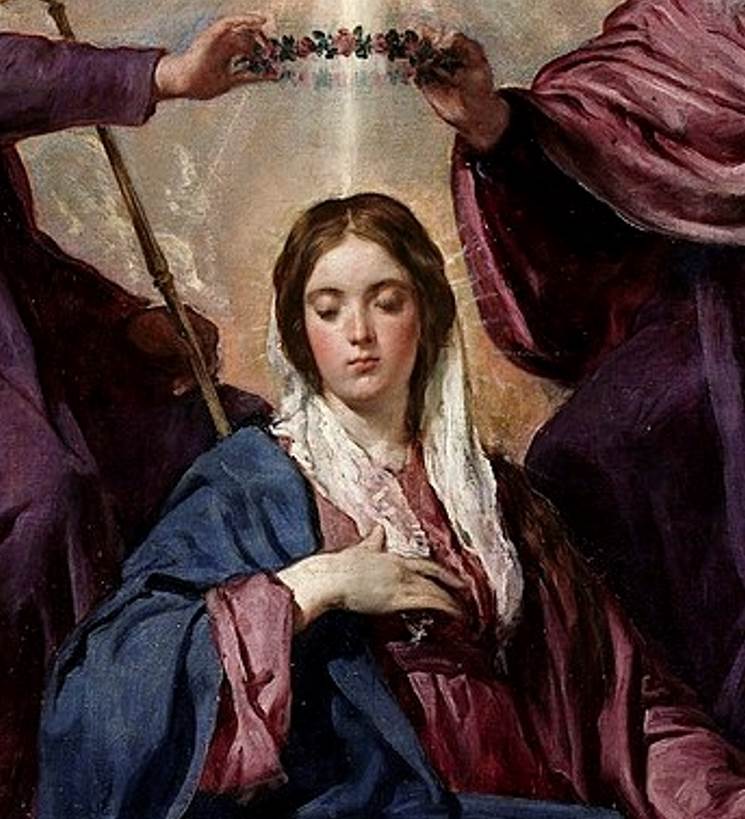
7. How big is The Coronation of the Virgin by Diego Velázquez?
The painting is far from being the largest painting in the extensive oeuvre of the artist, but it’s not his smallest work as well.
The Coronation of the Virgin by Diego Velázquez has dimensions of 176 × 124 centimeters (69 × 49 inches).
8. Where is the painting located today?
The painting was saved from the fire that devastated the Royal Alcázar of Madrid in 1734. Many paintings, including the artist’s most famous work called “Las Meninas” (1656) were thrown out of the window while the fire raged on that cold December evening.
It hung at the new Royal Palace as soon as it was completed over 3 decades later and didn’t leave the Spanish Royal collection.
It was eventually moved just across the historical heart of Madrid to the most famous museum in Spain called the Museo del Prado. It can still be admired here in room 014 of the museum.
